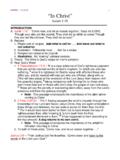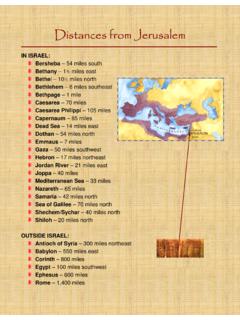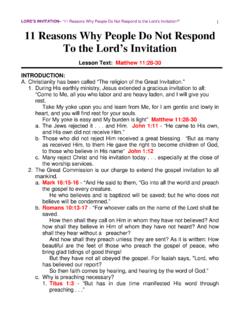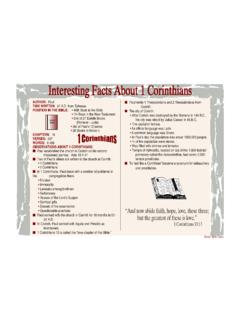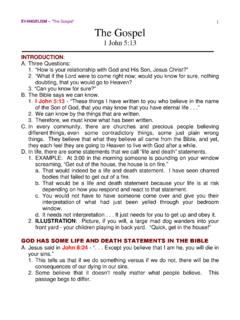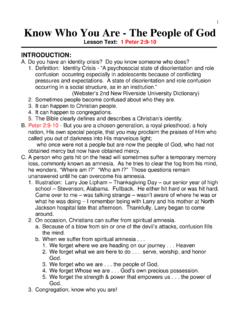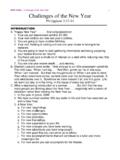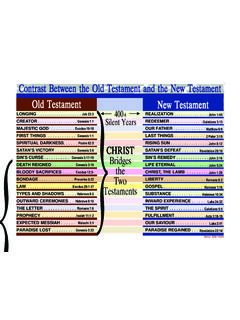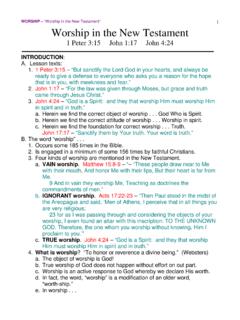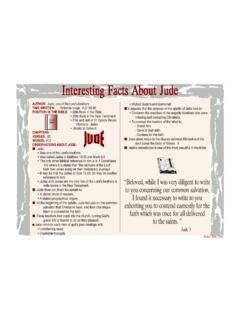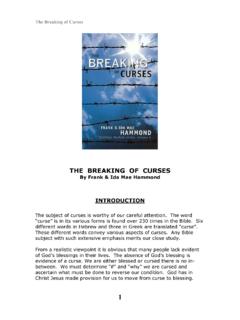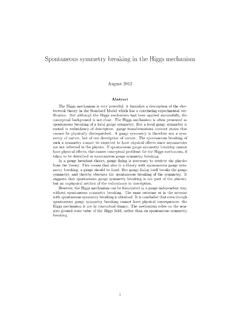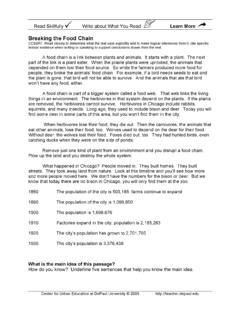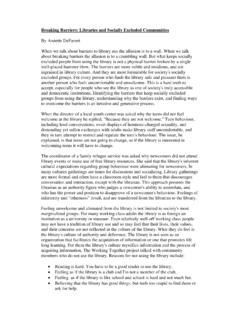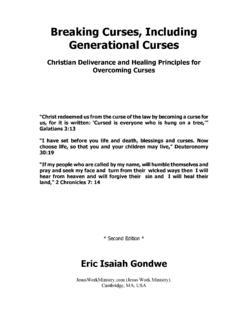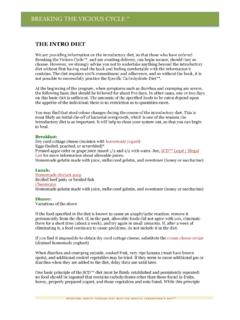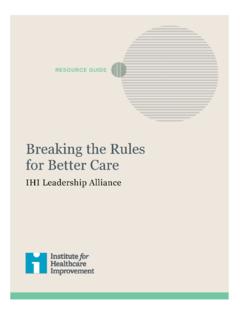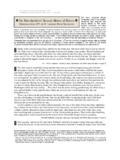Transcription of How To Break Down A Scripture - Bible Charts
1 TEACHERS: How to Break down a Scripture 1 How to Break down a Scripture THE IMPORTANCE OF RIGHTFULLY DIVIDING THE WORD OF GOD A. There are some un-welcomed tendencies present today. 1. There is the tendency to study about the Bible without studying what s in the Bible . 2. There is the tendency neglect the Bible in classes. a. There are so many lesson helps prepared and quarterlies written that many teachers fail to use the Bible in their classes. b. The Bible school exists sole for Bible study. c. Whether it is called Bible School, Sunday School, Bible Classes, etc., the important thing is that the Bible should not lose its place in that school. 3. There is the tendency not to encourage every student to bring a Bible to Bible class.
2 If they do not have one or cannot afford one, the elders will see to it that they receive on. 4. There is the tendency to emphasize method over content. 5. There is the tendency to treat the Sunday School program as a necessary stepchild. B. breaking down a Scripture infers that one is taking the larger and serving it in smaller portion. 1. 2 Timothy 2:15 Be diligent to present yourself approved to God, a worker who does not need to be ashamed, rightly dividing the word of truth. a. KJV renders it: Study to shew thyself approved unto God, a workman that needeth not to " b. ASV renders it: Give diligence to present thyself approved unto God, a workman that needeth not to be ashamed, handling aright the word of truth.
3 C. RSV renders it: Do your best to present yourself to God as one approved, a workman who has no need to be ashamed, rightly handling the word of truth. 2. Either way, Scriptures are to be: a. Rightly divided .. not wrongly divided. b. Handled rightly .. not handled wrong. THE PROCESS OF breaking down A PASSAGE. A. The first step is prayer. Ask God to help you see what is being taught. 1. Familiar passages ought to be read all the more careful. 2. Example: Luke 15:4 What man of you, having a hundred sheep, if he loses one of them, does not leave the ninety-nine in the wilderness, and go after the one which is lost until he finds it? 3. Where did he leave the ninety-nine? In the wilderness!
4 Then in the song why do we say they were left in the fold of safety? Read B. Know something about the overall book in which the passage appears. 1. Old Testament or New Testament. 2. Does it have to do with: a. Law b. History c. Literature d. Prophecy e. Biography C. Become familiar with the overall context. You may need to consider more than just the singular passage you are considering. You may be limiting yourself .. and God. PDF created with FinePrint pdfFactory Pro trial version : How to Break down a Scripture 2D. Who is the author of the text? 1. Who wrote the passage. 2. Who is speaking or being quoted in the passage. 3. Was the speaker inspired or uninspired. E. To whom is the text addressed?
5 1. What do we know of these people, their situation, their history, the reason for addressing the text to them. 2. What is their relation to God, and how were they serving Him. 3. What was their particular problems and weaknesses. F. Of whom does the text speak? 1. The Ethiopian Eunuch asked that same question in Acts 8:34 So the eunuch answered Philip and said, I ask you, of whom does the prophet say this, of himself or of some other man? 2. We need to know the persons discussed in the text in order to appreciate what is said to them or about them. 3. For example: To know something of the background of the Philistines, the Samaritans, Pharisees, Sadducees, Athens, Corinth, Rome, Etc. will help us better understand the text.
6 4. What is the nature of the writing in the text? a. The Bible contains a wide variety of types of writing. 1. Law 2. Prophecy 3. Proverbs 4. Letters 5. Visions, 6. Etc. b. Familiarity with the various types of writing will be a plus in Bible study. G. When was the text written? 1. A knowledge of when the text was written will help us to determine under what law the statement was made. 2. This will help us see if the text has direct application to our lives. H. From what place was the text written? 1. The surroundings and atmosphere of a text often contribute to its meaning. 2. For example: Many expressions in some of Paul s epistles are more meaningful when we realize that Paul was in prison while awaiting execution.
7 2 Timothy. 3. It is necessary to properly understand some of the prophecies of the Old Testament to know they were made in Babylon, and refer to Israel s return from there to Palestine. Much false teaching has resulted in not understanding that. I. Look for what the passage is actually saying rather than what you would like for it to say. 1. Do not study with a hope of confirming or proving already drawn conclusions. 2. In studying the Old Testament, ask yourself this all important question: What can I learn from this passage that will help me be a better New Testament Christian this side of the cross? 3. Write down the ideas that come to you from the passage. 4. Be open to other passages, Bible stories, etc.
8 That some of those thoughts may lead you to. 5. Take sufficient time to reflect on the passage. A hurried mind and a hurried schedule will leave much of the passage behind. J. Determine what you can learn from the passage that will: PDF created with FinePrint pdfFactory Pro trial version : How to Break down a Scripture 31. Help you grow spiritually by increasing your knowledge. 2. Enable you to be able to share with others in order to help them. PDF created with FinePrint pdfFactory Pro trial version
